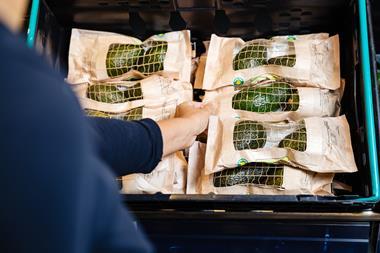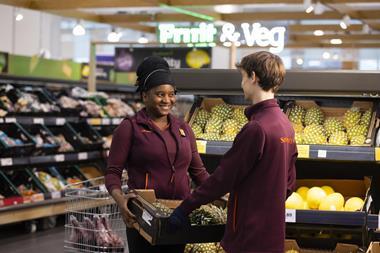However, the incorporation of Sainsbury's new zone' concept could help to boost the store's performance further by appealing to the busy suburban shoppers who seek everything in one store.
The choice of Purley Way as the second location for this new concept seems a wise decision, given the high number of the Acorn types to which this concept is likely to appeal, namely wealthy achievers, suburbia; comfortable middle-agers, mature home-owning areas; affluent urbanites, town and city areas.
But will it appeal to the white collar workers, better-off multi-ethnic areas who dominate the catchment and make up 25% of the shoppers likely to visit the store?
Despite strong competition from the usual suspects in outer London, this store is located in the middle of some of Sainsbury's best customers, and the Acorn profile of the catchment fits closest to Sainsbury's than any of the other multiples based on an analysis of BMRB's TGI survey.
Therefore, it is little surprise that the store, now trading from 56,000 sq ft, dominates the area, with Sainsbury taking a sizeable 34% share of the catchment served by the Purley Way store.
As expected, Tesco leads the competition, both in terms of local market share, at 29%, but also in terms of demographic fit to the local shoppers.
The remaining 37% of the catchment is highly fragmented, and no other retailer comes close to the local domination of the nation's two leading supermarket chains. With Tesco's considerable presence in the local catchment it is likely to feel the impact of the extension most. Its three stores are predicted to have a weekly net loss of £70,000 according to our calculations.
However, Asda, also seeking to serve the one-stop' market, is likely to feel a considerable impact at its one competing store, with a predicted weekly loss of sales of £60,000.
Safeway and Somerfield/ Kwik Save are also likely to feel an impact, albeit slighter, with losses of £20,000 and £6,000 for the chains respectively.
{{INSIGHT }}
The choice of Purley Way as the second location for this new concept seems a wise decision, given the high number of the Acorn types to which this concept is likely to appeal, namely wealthy achievers, suburbia; comfortable middle-agers, mature home-owning areas; affluent urbanites, town and city areas.
But will it appeal to the white collar workers, better-off multi-ethnic areas who dominate the catchment and make up 25% of the shoppers likely to visit the store?
Despite strong competition from the usual suspects in outer London, this store is located in the middle of some of Sainsbury's best customers, and the Acorn profile of the catchment fits closest to Sainsbury's than any of the other multiples based on an analysis of BMRB's TGI survey.
Therefore, it is little surprise that the store, now trading from 56,000 sq ft, dominates the area, with Sainsbury taking a sizeable 34% share of the catchment served by the Purley Way store.
As expected, Tesco leads the competition, both in terms of local market share, at 29%, but also in terms of demographic fit to the local shoppers.
The remaining 37% of the catchment is highly fragmented, and no other retailer comes close to the local domination of the nation's two leading supermarket chains. With Tesco's considerable presence in the local catchment it is likely to feel the impact of the extension most. Its three stores are predicted to have a weekly net loss of £70,000 according to our calculations.
However, Asda, also seeking to serve the one-stop' market, is likely to feel a considerable impact at its one competing store, with a predicted weekly loss of sales of £60,000.
Safeway and Somerfield/ Kwik Save are also likely to feel an impact, albeit slighter, with losses of £20,000 and £6,000 for the chains respectively.
{{INSIGHT }}

















No comments yet